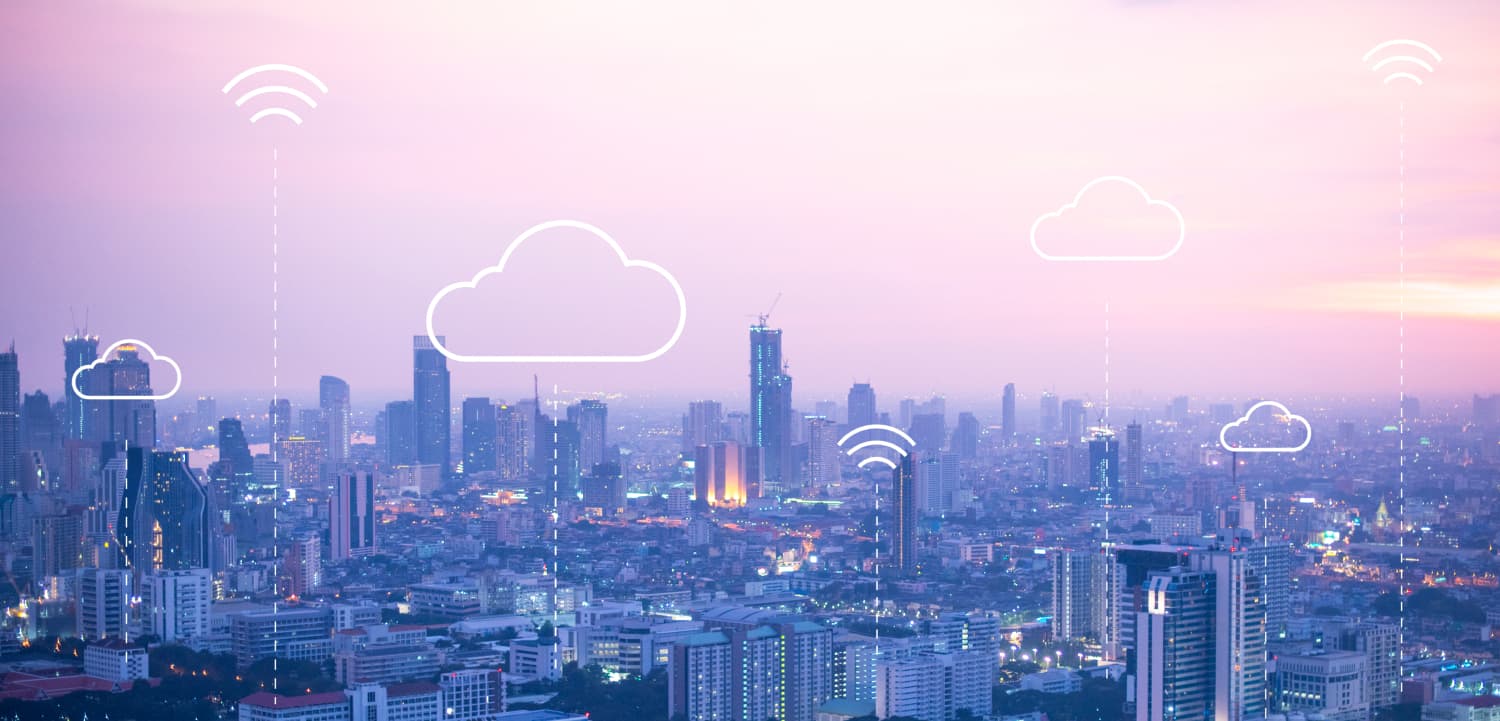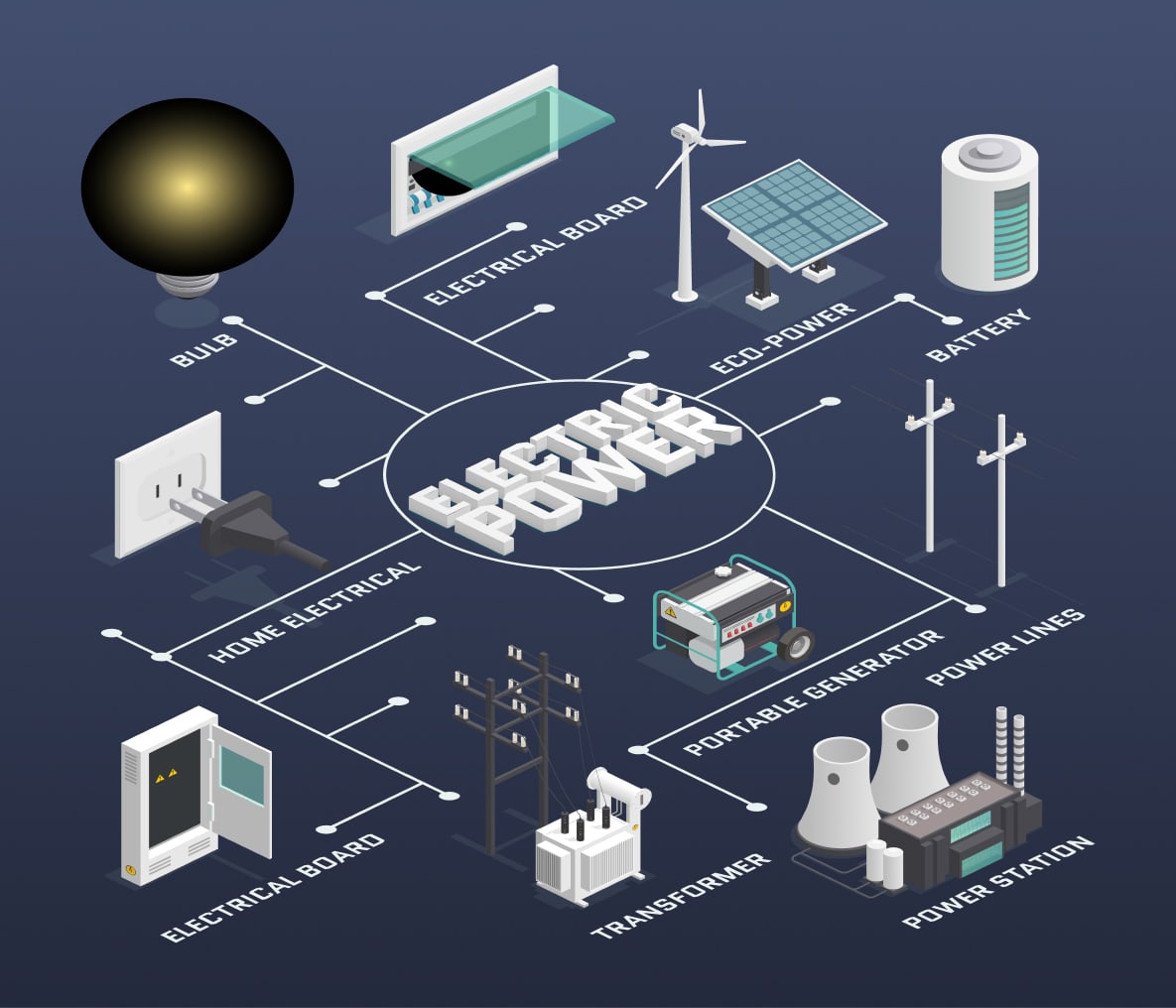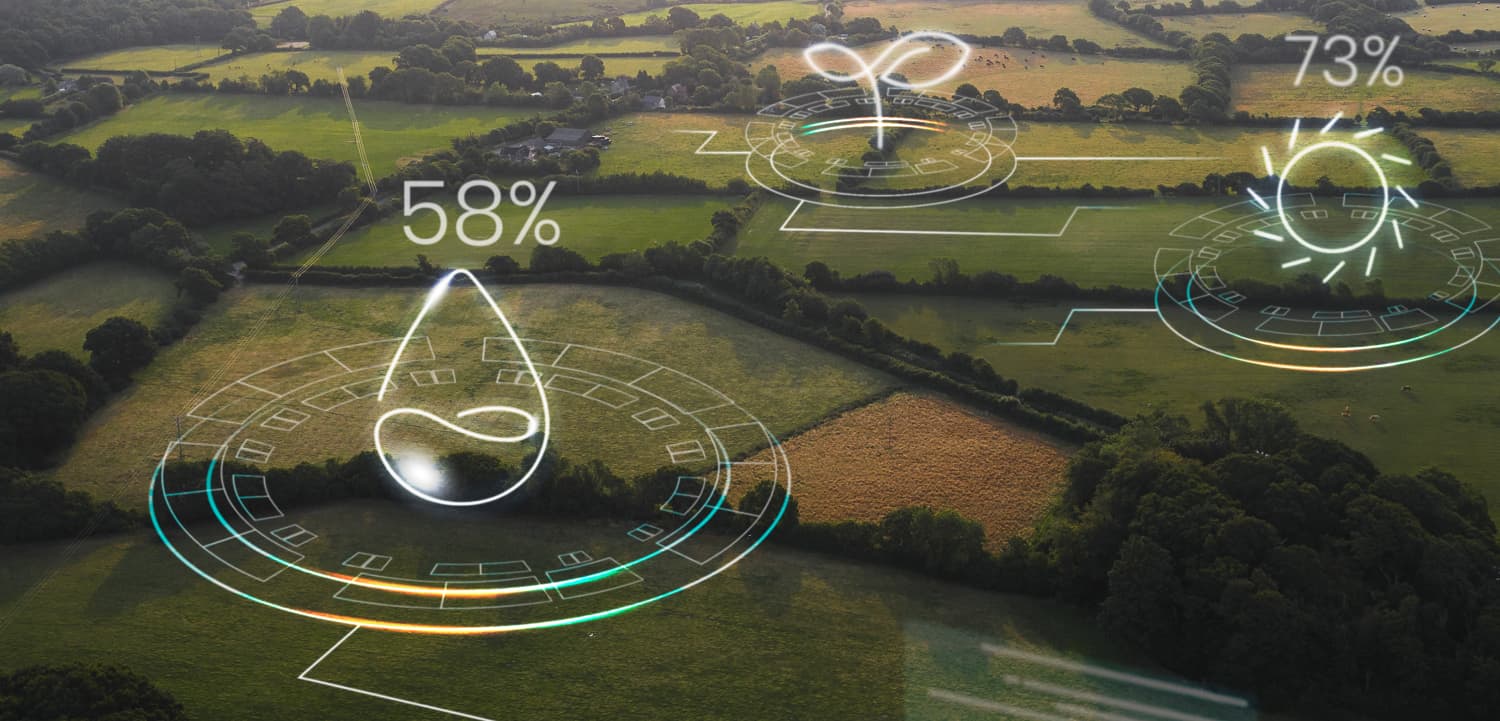I. Introduction
In today's fast-paced digital era, it's no secret that the concept of a "Digital Twin" is reshaping industries far and wide.
But what exactly is a digital twin? And how does 3D building data facilitate its creation?
In essence, a digital twin is a dynamic virtual replica of physical areas, objects, or systems that empowers forward-thinking organizations with real-time insights and predictions, opening doors to unprecedented opportunities.

This article takes you on a journey to uncover the ins and outs of digital twins, the role of 3D building data in creating them, and how ONEGEO can help you leverage this concept for competitive advantage. So, let's dive in and explore!
II. Demystifying Digital Twins
Imagine being able to clone your city, your factory, or even a wind turbine into a virtual model. Not just an inert digital copy, but a dynamic and interactive replica that syncs with its real-world counterpart in real-time, offering you a sandbox to test strategies, predict issues, and explore solutions.
This virtual clone is essentially what we call a "Digital Twin".

The beauty of digital twins is that they bring together different data sets, creating a living, breathing model. They bridge the gap between the physical and digital world, allowing you to monitor, analyse, and simulate scenarios in a risk-free environment before applying decisions in the real world.
Their application is only limited by our imagination…
- In manufacturing, a digital twin can optimize production lines by identifying bottlenecks
- In energy management, it can predict the best times to store or use power, maximizing efficiency
- In healthcare, it can model the spread of diseases or the impact of treatments, aiding strategic planning
- The list goes…
However, to create a useful and accurate digital twin, you need a reliable and realistic digital foundation. That's where 3D building data comes into play.
So, let's uncover how this key element serves as a springboard for developing your digital twin, irrespective of your industry or application.
III. The Essence of 3D Building Data
If we want to construct a meaningful and operational digital twin, we need a reliable base. This base is provided by 3D building data, which serves as a fundamental layer in this digital venture.
Picture 3D building data as the urban framework of your digital twin, providing the necessary context for other elements to be overlaid and understood in relation to the environment. The data captures the key physical attributes, such as building footprints and height, giving a basic but crucial understanding of the spatial arrangement and scale in your area of interest.
While the model might not delve into architectural nuances, its primary value lies in illustrating the overall urban fabric. The buildings, streets, open spaces, and other significant physical features set the stage upon which other digital assets can be integrated.
Remember, 3D building data isn't stagnant. As cities evolve, the data can be updated, ensuring your digital twin remains a realistic reflection of the current environment. The dynamic nature of 3D building data ensures your digital twin remains relevant, adaptive, and efficient over time.
IV. Tailoring your Digital Twin: Enriching your 3D Cityscape with Industry-Specific Data
While the 3D city model provides a solid basis, the true power of a digital twin lies in its specificity - how closely it represents the aspects of the physical world that matter most to your industry and use case.
Let's consider a few examples…
Energy Grid Management
By superimposing information about power lines, substations, and consumer usage patterns onto the 3D cityscape, energy providers can simulate diverse scenarios, predict energy demands, and optimize service delivery. This empowers them to efficiently manage the energy grid, ensure reliable power supply, and implement sustainable energy solutions.

Intelligent Transport Planning
Real-time traffic data, road conditions, and public transportation schedules are invaluable for creating a digital twin that optimizes urban mobility. By feeding this data into the digital twin, transportation authorities can identify congestion hotspots, test innovative traffic flow solutions, and fine-tune public transit routes for optimal efficiency.

Smart City Planning
By incorporating detailed information on building heights, architectural styles, and urban layouts, city planners can simulate different development scenarios, assess the impact of new infrastructure projects, and optimize urban designs for factors such as sunlight exposure, green space distribution, and pedestrian accessibility. This allows for more informed decision-making, sustainable city development, and improved quality of life.
Water Management
Data on water usage patterns and infrastructure networks can help water authorities to simulate water flow, detect leaks or inefficiencies, and implement measures to improve water distribution efficiency. This leads to sustainable water management, reduced water waste, and optimized water distribution networks to help conserve this valuable resource.

Emergency Response and Disaster Management
In the context of emergency response and disaster management, digital twins based on 3D building data can be invaluable. By incorporating data on building structures, infrastructure networks, and population density, emergency management agencies can simulate different disaster scenarios, assess vulnerability, and develop effective evacuation plans. This enables proactive preparedness, efficient resource allocation, and enhanced public safety.

Tourism and City Marketing
3D building data is also instrumental in creating digital twins that support tourism and city marketing efforts. By incorporating data on landmarks, cultural sites, and tourist attractions, city marketing agencies can create immersive virtual experiences that showcase the city's unique offerings. These digital twins can be used to attract visitors, plan tourism routes, and provide interactive guides that enhance the visitor experience.

The possibilities are vast and diverse, limited only by the data you choose to incorporate. Each industry and each business will have unique needs and objectives for their digital twin, and the ability to customize your model by enriching the 3D cityscape with industry-specific data is critical.
However, the process of integrating various data sources might seem daunting. As we move forward, we'll explore some practical steps and considerations to make this task manageable and effective.
The goal? To help you create a digital twin that's not only a mirror of your physical world but also a powerful tool for informed decision-making and strategic planning.
V. The Economic Edge: Gaining value from Digital Twins from 3D Building Data
In the digital era, value is often derived from information, understanding, and the ability to anticipate. This is where the creation of digital twins from 3D building data becomes a game-changer.
Digital twins offer unparalleled insights into the physical world they mirror. Whether you're examining a specific asset, managing a complex project, or overseeing an entire area, having a digital twin in your toolkit can provide a competitive advantage.
By overlaying the 3D cityscape with your specific data, you create a dynamic, interactive model that can help you understand patterns, foresee
challenges, and simulate potential solutions. This ability to "see the future" and proactively plan is an invaluable advantage that can lead to
increased efficiency, reduced risks, and improved decision-making.
Moreover, digital twins can uncover hidden opportunities. Through detailed analysis and simulations, you might discover untapped markets, innovative
service potentials, or strategies for optimizing resources. Each of these can translate into growth and profitability.
In the following section, we'll guide you through the first steps towards harnessing this value by creating your very own digital twin.
VI. Creating Your Own Digital Twin
Embarking on the journey to create a digital twin may seem challenging, but it can be more manageable than you might think, particularly when using 3D building data as your foundation. Here are some important considerations to guide you through the process:
- Establish your objective: The first step in creating a digital twin is to clearly identify what you want to achieve with it. Do you want to optimize operations, improve planning, enhance customer service, or explore new market opportunities? Your objectives will guide the type of data you'll need to incorporate into your digital twin.
- Leverage 3D building data: Using ONEGEO's maps with 3D building layer as a starting point provides a broad, accurate representation of the physical environment. This serves as a solid base upon which to overlay your specific data.
- Identify relevant data sources: Based on your objective, determine the types of data you'll need. This might include operational data, customer data, infrastructure data, environmental data, and more. Remember, the value of your digital twin is in its specificity and its ability to mirror the aspects of the real world that are most relevant to your goals.
- Integrate and update data: Combine your identified data sources with the 3D building data to create your digital twin. Establish processes for regular data updates to ensure your digital twin stays current and relevant. This might involve real-time data feeds or scheduled data updates, depending on your needs.
- Test and iterate: Once your digital twin is up and running, use it to simulate scenarios, anticipate outcomes, and make informed decisions. Keep refining and expanding your digital twin as your needs evolve and as new data becomes available.
Creating a digital twin using 3D building data is an investment in the future. As you navigate this process, remember that the ultimate goal is to create a dynamic tool that can adapt with you, providing valuable insights and strategic advantages as your business grows and evolves.
VII. Beyond the Now: The Future of Digital Twins and 3D Building Data
As we stand at the intersection of technology and urban development, the potential of digital twins and 3D building data is only beginning to unfold. Looking ahead, we can glimpse a future brimming with exciting possibilities and transformative innovations.
Intelligent Automation and Optimization: Imagine a digital twin that not only captures and analyses data but also makes intelligent decisions and initiates actions in real time. Through advancements in artificial intelligence and machine learning, digital twins will become active participants in optimizing processes, reducing inefficiencies, and automating tasks.
Sustainable Urban Planning: With the increasing focus on sustainability, digital twins will play a pivotal role in creating greener cities. By integrating environmental data into 3D building data, digital twins will enable us to model energy consumption, evaluate the impact of urban design on climate patterns, and optimize resource utilization for a more sustainable future.
Smart Infrastructure Management: Digital twins will revolutionize infrastructure management, ensuring efficient operation, maintenance, and safety. With real-time monitoring and predictive analytics, we can anticipate maintenance needs, proactively address vulnerabilities, and optimize the performance of critical infrastructure systems.
Collaborative Decision-Making: Digital twins will empower collaborative decision-making by bringing together stakeholders from diverse domains onto a shared virtual platform. Whether it's urban planners, architects, engineers, or policymakers, they can all contribute their expertise, interact with the digital twin, and collectively shape the future of cities.
Mixed Reality Experiences: As technology advances, the boundaries between the physical and virtual worlds will blur. Digital twins will become immersive experiences, accessible through augmented reality (AR) or virtual reality (VR) technologies. This will enable stakeholders to visualize and interact with the digital twin in new and engaging ways, fostering better communication and understanding.

The future of digital twins and 3D building data holds boundless opportunities for innovation, sustainability, and enhanced decision-making. By embracing these advancements, businesses and cities can stay ahead of the curve, gain a competitive edge, and contribute to the creation of smarter, more liveable environments.
As we move forward, the synergy between digital twins and 3D building data will continue to evolve, opening doors to possibilities we can only begin to imagine. The journey has just begun, and the future promises a remarkable transformation in how we plan, design, and shape our urban landscapes.
VIII. Conclusion
The world of digital twins powered by 3D building data is not a distant vision of the future - it's the here and now, and it's brimming with immense opportunity. By seizing this opportunity and future-proofing their business, organizations can stay ahead of the game.
It goes beyond cost savings and operational efficiency - it's about tapping into untapped potential, embracing the transformative potential, making informed decisions, and shaping the future.
The time to embark on this journey is now. Are you ready?
Start leveraging ONEGEO 3D building data today
